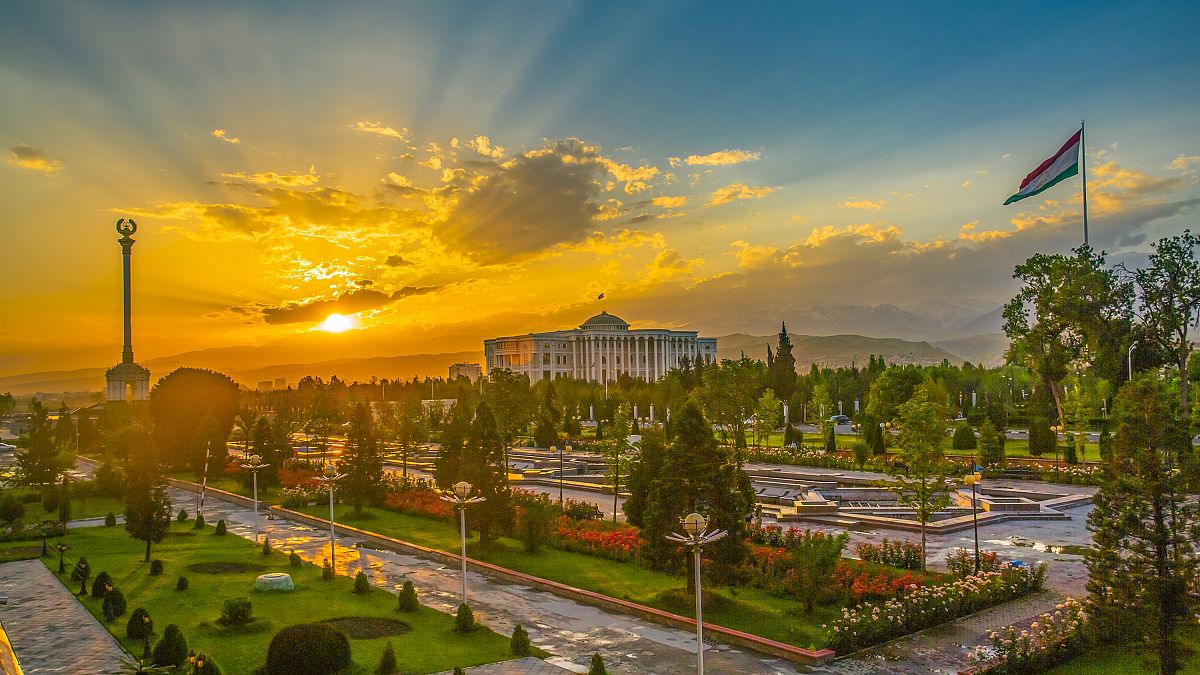Monday might be just another day of the week, but if one adds majestic mountains, glacial lakes and impressive green landscapes, they give birth to a totally different mood.
Dushanbe is the capital and the largest city of Tajikistan, a country of rare natural beauty.
Meaning “Monday” in Persian, the city is named after its historical Monday market. In fact, this region holds much more than just memories of its provincial past.
The country itself is one of the most inspiring high-altitude landscapes on the planet, with over 90 per cent of its terrain teetering in the clouds.
Besides, the quiet capital of Tajikistan, hidden amongst unsurpassed views and natural splendour, offers unique opportunities for those who would like to visit the "roof of the world" to see the mountains of incredible beauty with the highest peaks in the territory of the former USSR.
A land of progress
For centuries, Dushanbe was a small agricultural village in Central Asia that was largely unknown around the globe.
But with the Bolshevik revolution and Red Army conquest of Central Asia, the sleepy market town was made the capital of the new Tajik Autonomous Soviet Socialist Republic in 1929 and appeared on the world map.
Prior to the collapse of the Soviet Union and the civil war in Tajikistan that began in 1992 and ended in 1997, the city experienced rapid industrial growth and its population quickly expanded.
In the following years, the country took course towards rebuilding and development. And, in the last five years under the leadership of its mayor, Rustami Emomali Dushanbe, Dushbane has undergone a quiet renaissance that has been pushing to the forefront of travellers' wishlists.
Today the city offers an excellent combination of tradition and contemporary vision in architecture and design. Luxury hotel chains including Hyatt and Radisson join the 10th-century ramparts of the Citadel, all nestled within the reconstructed bastions of the city wall.
And, the 850,000 people that call it home are eager to share its transformation with the world.
Where can you experience local culture in Dushanbe?
With forts, bazaars, museums and monuments, Dushanbe’s culture needs not to be sought out but simply absorbed.
One of the top sights is undoubtedly the Hissar Citadel 25 km away from Dushanbe, the reconstructed corner of which is open to visitors to discover disintegrating baked-earth walls and six kilometres of fortifications that were rebuilt in the 13th century and mark the site of Alexander the Great’s original settlement.
In more modern areas of cultural value, there are such attractions as the majestic Palace of Nations, next to the statue of the Tajik State founder Ismoli Somoni. But the central attraction of the city is an even more impressive place.
The Maidoni Istiqlol - or Independence Square - is a newly unveiled public monument inaugurated by the President of Tajikistan Emomali Rahmon on 8th September, during the nation’s 30th Republic Independence Day celebrations.
Measuring 30 hectares in size, the new square features central, southern and northern gates, landscaped gardens, dancing fountains and decorative pools.
At its centre, a 121-metre monument towers majestically above the city below, proudly symbolising the sovereignty of Tajikistan, while nestled within lies a treasure trove of historical artefacts.
The Museum of the Complex displays exhibits dating back as far as the stone age, including an axe, an image of the Greek God Dionysus and a female earring shaped like a sphinx.
Further inside stands a symbolic Tajik rulers’ throne, whittled from wood and coated in gold, on which a golden sceptre has been placed to symbolise independence and Tajikistan’s new revival.
The ground on which the monument stands is historic in its own right, marking a site occupied by Tajiks over 250,000 years ago from which ancient relics have been unearthed in recent times.
The combination of antiquity and modernity is a distinctive feature of Dushanbe itself — of an ancient city that surprises with its novelty.
Exploring Central Asia’s greenest city
Dushanbe is a charming city that wraps around cobalt blue lakes, cascading fountains, and sprawling public parks.
During warmer months, there’s no better way to spend an afternoon than strolling along grand plane tree boulevards, visiting museums and settling in for a picnic in one of the city’s green spaces — particularly Rudaki Park.
With its verdant canopy of trees and series of winding pathways through gardens and fountains, the park is an idyllic spot to soak up Dushanbe’s new landmarks with a chequered blanket and a takeaway portion of plov, Tajikistan’s hearty rice and veg dish.
A wander through the rose gardens leads to the Rudaki Statue, which pays homage to the nation’s most revered poet after whom the park is named, and the State Flag flies from a 165-metre flagpole that was installed to mark 20 years of independence.
For a shady retreat in the heat of summer, Dushanbe’s Botanical Gardens are a peaceful haven lined with deciduous trees.
The townspeople like to gather on weekends near the cool mountain river Varzob. Wander along the river or take a nap on the green banks.
Perhaps one of Dashunbe’s best vantage points, Victory Park is perched on a looming hilltop offering breath-taking views across the city. One of the city’s most tranquil spaces, the park encompasses a Second World War monument, plus a teahouse selling all manner of fragrant brews and sweets.
It’s a popular spot for locals and tourists alike, and as the sun sinks beneath the city at your feet, there’s no better way to bid farewell to Monday, Tuesday — or any other day of the week.
